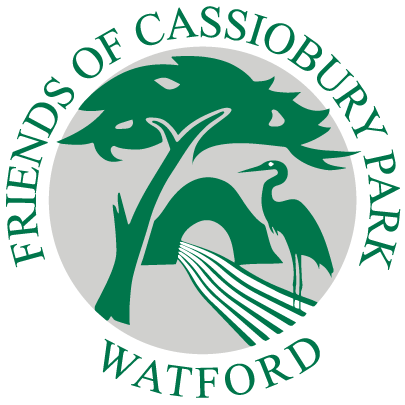Wetlands Project
Cassiobury Park once had a number of commercial watercress beds stretching from Cassiobury Farm in the south to the lock in the north. By the 1970s the beds ceased their commercial use for watercress. They then became an interesting wetland site for birds such as Snipe and Green Sandpiper, sharing the beds with dragonflies, damselflies and freshwater shrimps.
The chalk and gravel base is a special feature of the area. In the early 1980s the largest bed, part of the flood plain and approximately 4 acres, was fenced off as a nature reserve; a hide was built and access provided.
This and other beds in the nature reserve then slowly became silted up, so their use as flood plain and as a wildlife habitat steadily declined to the point where their function as a nature reserve is severely limited and their accessibility to park users is minimal.
Friends of the Park raised the issue with Watford Borough Council (WBC) and in 2018 funds from the Heritage Lottery Fund were used to start the project, with support from the Wetlands and Wildfowl Trust (WWT) and Herts and Middlesex Wildlife Trust. (HMWT).
The primary aims of the Wetlands project are to:
- Restore the watercress beds as a much improved biodiverse wildlife habitat
- Reduce flooding elsewhere by opening up the floodplain
- Provide wildlife-friendly access for park users.
Since 2018 the project has steadily progressed. The old fencing around the largest watercress bed has been removed. FoCP volunteers and Community Connections have partially cleared the entrance and main feeder channels. Also, much of the infrastructure has been revealed and ecologists have conducted surveys on key species such as great-crested newts, birds, and water voles.
Most importantly, in 2020 WBC decided to fully fund the project as part of its green agenda for sustainability and biodiversity. The main works were undertaken in the summer of 2023. The area is now flooded and awaiting the wildlife to discover it. Future plans include a viewing platform with a screen and signage around the site.



Other Wetlands Work linked to the main project.
In addition to the clearance of silt in the other watercress beds, the large off-river pond and scrape (ORSU) will be restored and the scrape bridge will be replaced. In the meantime, Community Connections have helped to help reduce flooding and erosion on the river banks as well as improve paths in the wetlands.



